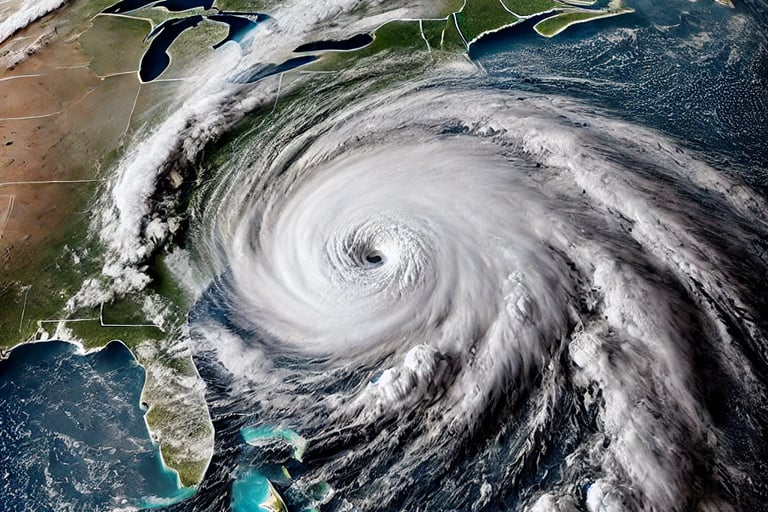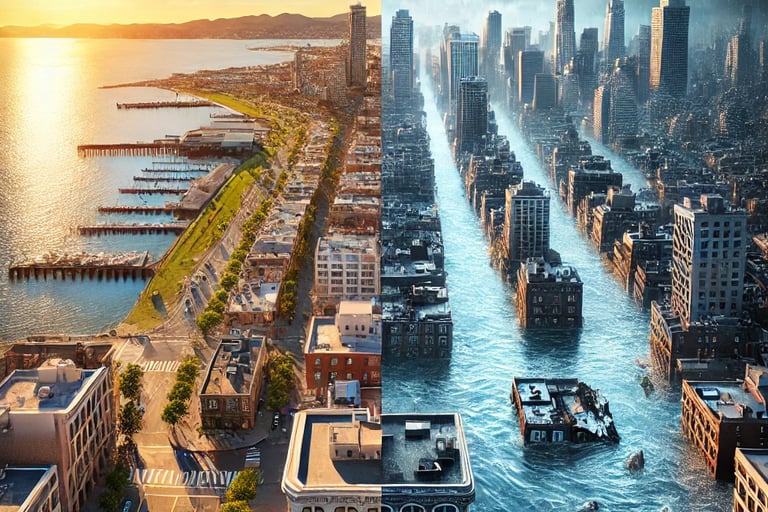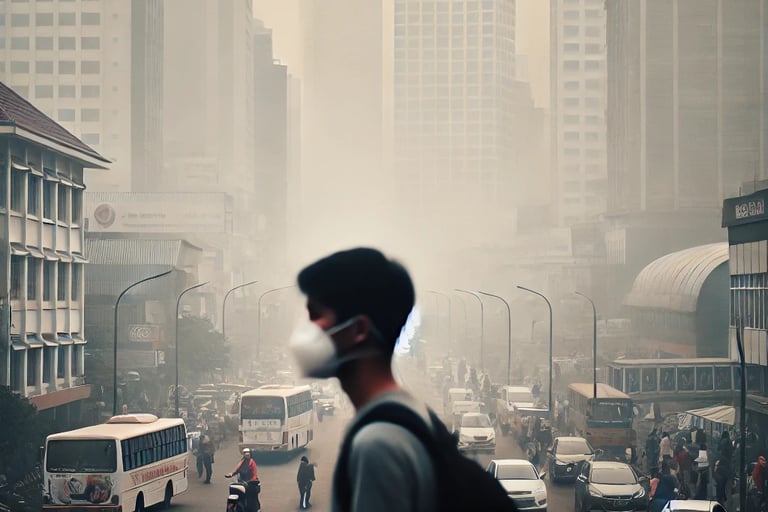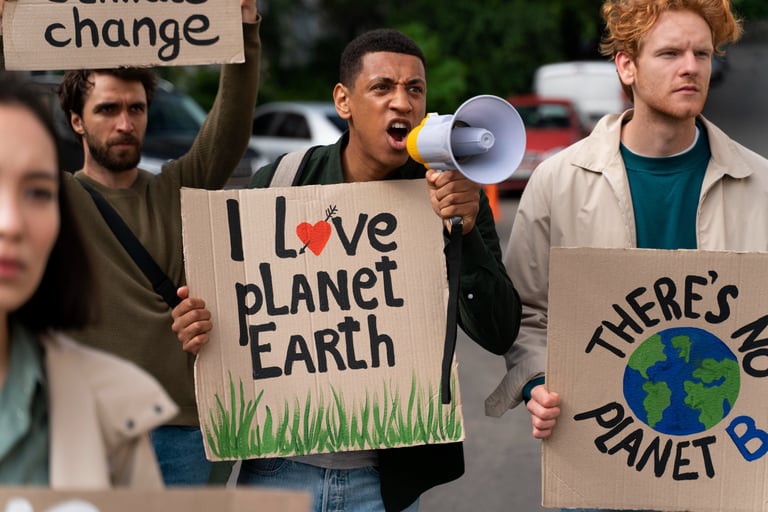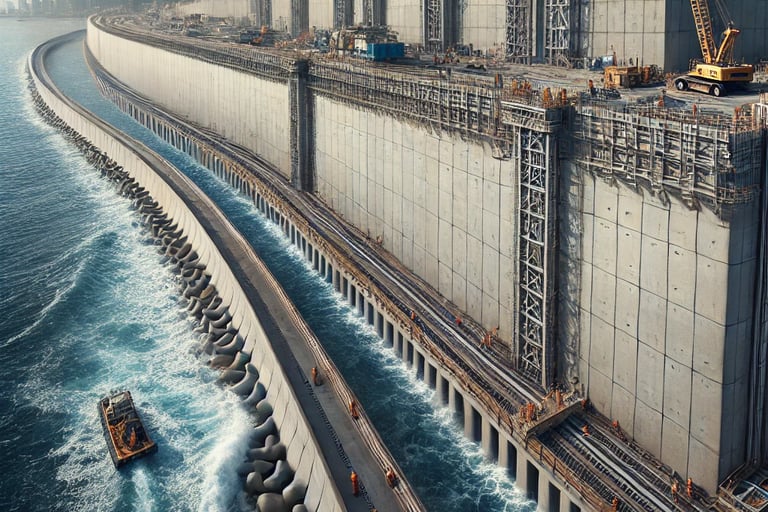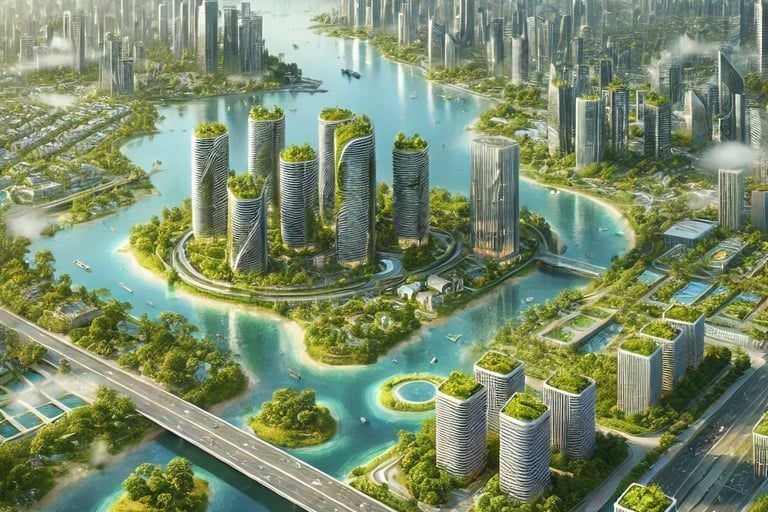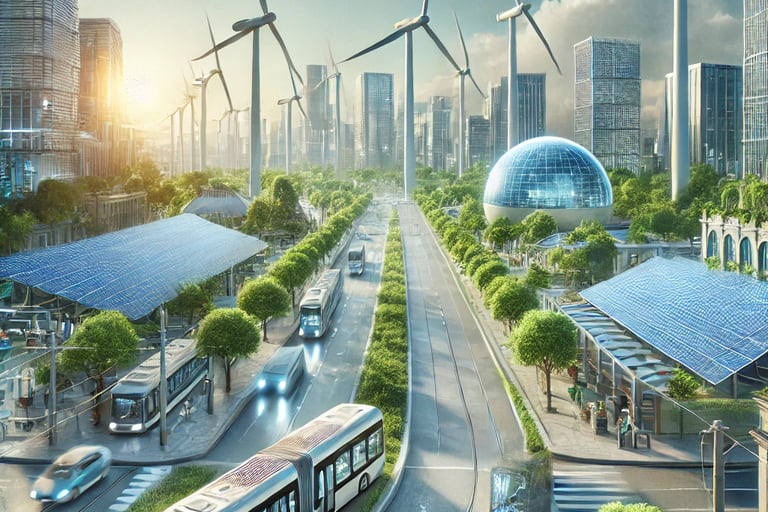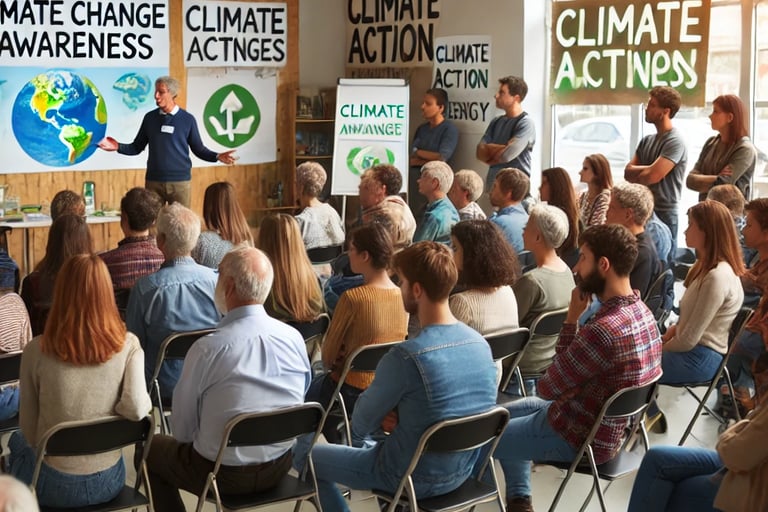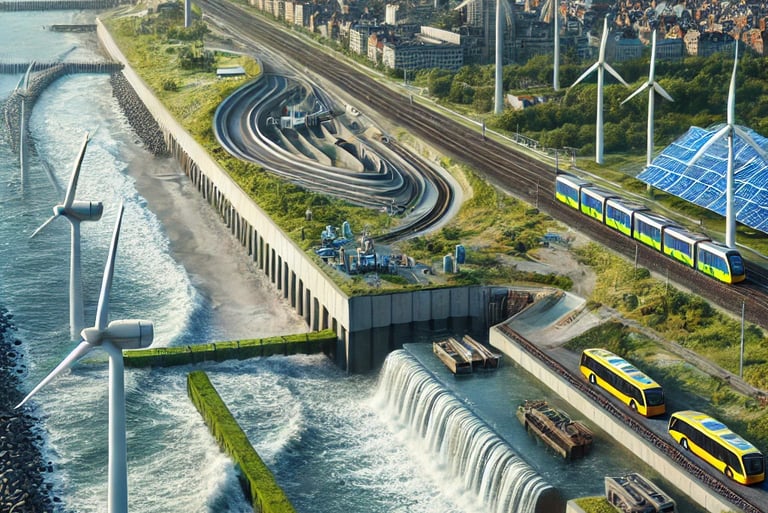The Impact of Climate Change on US Coastal Cities and Rising Concerns with Solutions
Climate change is no longer a distant threat—it's a present reality reshaping US coastal cities.
LIFESTYLE
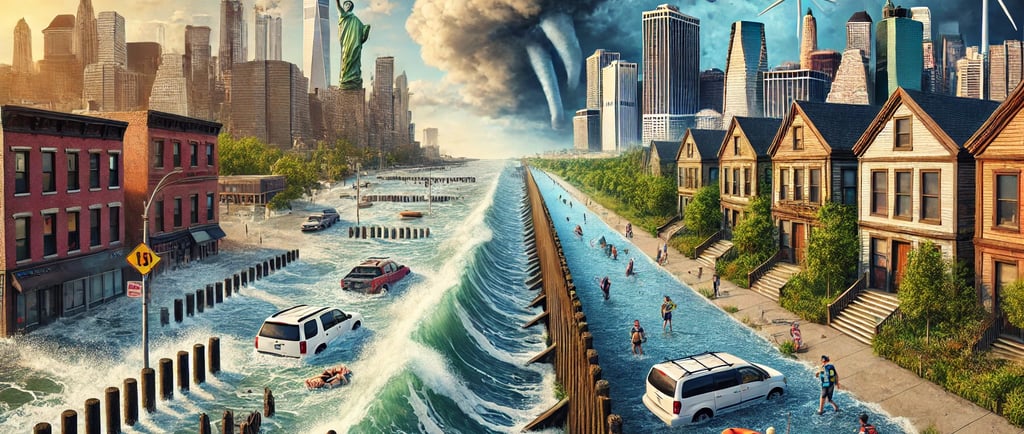

Coastal communities across the U.S. are facing unprecedented challenges due to climate change. Rising sea levels, stronger hurricanes, and increasing coastal erosion are forcing residents to deal with frequent flooding, damaged infrastructure, and economic instability. Homes, businesses, and vital public services are at risk, making it clear that urgent action is needed.
Despite these challenges, solutions exist. Reducing carbon emissions, strengthening coastal defenses, improving emergency preparedness, and implementing smarter land use planning can help protect these vulnerable areas. By investing in resilience now, cities can safeguard their communities, preserve local economies, and create a sustainable future for generations to come. The time to act is now.
The effects of climate change on U.S. coastal cities are already evident, but strategic action can reduce its most severe impacts. By strengthening policies, investing in resilient infrastructure, and empowering communities, cities can adapt to changing conditions and safeguard both people and ecosystems. Proactive measures today will determine the future livability of these coastal regions. The time for action is now—to build a more sustainable, resilient, and secure future for generations to come.
4. Community Engagement and Education
Helping people understand climate change is key to protecting our cities. Public education campaigns, workshops, and local programs can teach residents about rising sea levels, extreme weather, and how they can help. Schools, businesses, and community groups can work together to promote simple actions like using less energy, supporting green spaces, and preparing for climate challenges.
Involving communities in climate action makes a big difference. Citizen science programs allow people to help track environmental changes, giving useful information while increasing awareness. When residents take part in planning, cities can create better solutions that meet their real needs. An informed and active community can push for stronger policies and ensure leaders take action for a safer future.
5. Federal and State Policy Support
Strong government policies are crucial for safeguarding coastal cities from the impacts of climate change. Federal and state governments must prioritize climate resilience by funding critical infrastructure projects such as seawalls, flood barriers, and advanced drainage systems to mitigate the risks of rising sea levels and extreme weather. Offering incentives for renewable energy adoption, sustainable construction, and eco-friendly transportation can drive long-term environmental responsibility while reducing carbon footprints. Additionally, stricter environmental regulations, including restrictions on construction in high-risk coastal zones and enforcement of lower carbon emissions, can significantly reduce vulnerability to climate disasters. Governments must also invest in disaster preparedness programs to enhance emergency response and recovery efforts.
2. Sustainable Urban Planning and Infrastructure
As climate change intensifies, sustainable urban planning is essential for protecting coastal cities. Green infrastructure solutions, such as permeable pavements, green roofs, and urban wetlands, help absorb excess rainwater, reducing the risk of flooding and soil erosion. These eco-friendly designs also improve air quality, support biodiversity, and create cooler urban environments. Additionally, enforcing stricter building codes that mandate flood-resistant materials, elevated structures, and improved drainage systems can strengthen a city’s ability to withstand extreme weather. By integrating smart urban planning with resilient infrastructure, coastal cities can remain safe, sustainable, and livable for future generations.
3. Reducing Carbon Emissions
Lowering greenhouse gas emissions is crucial to slowing climate change and building more sustainable cities. Transitioning to clean energy sources like wind and solar power can reduce dependence on fossil fuels, while improving energy efficiency in buildings through smart technology and greener construction standards can significantly cut emissions. Expanding public transportation, promoting electric vehicles, and developing pedestrian-friendly infrastructure can further reduce carbon footprints by decreasing reliance on cars. By embracing renewable energy and sustainable urban planning, cities can not only lower emissions but also enhance resilience and protect the environment for future generations.
2. Public Health Risks
Climate change is significantly worsening public health risks. Rising temperatures contribute to heat-related illnesses, especially in urban areas where the heat island effect makes cities even hotter. Poor air quality, driven by increased pollution and wildfires, is leading to a surge in respiratory diseases like asthma and bronchitis. Flooding caused by extreme weather events contaminates water sources, increasing the spread of waterborne diseases such as cholera and dysentery. These health threats disproportionately affect vulnerable populations, including children, the elderly, and those with preexisting conditions. Investing in climate resilience—through improved infrastructure, sustainable urban planning, and stronger public health systems—can help mitigate these dangers and protect communities.
3. Policy and Governance Challenges
City governments face significant obstacles in addressing climate change, often hindered by political disagreements, limited funding, and bureaucratic delays. While some cities have taken proactive measures, a lack of federal coordination and financial support has slowed progress in many regions. Without sufficient resources, local governments struggle to enforce climate policies, upgrade infrastructure, and implement large-scale adaptation strategies. Political divides further complicate decision-making, delaying critical actions needed to mitigate climate risks. Strengthening federal and state collaboration, increasing funding, and streamlining policy implementation are essential to creating effective, long-term climate solutions that can protect communities and economies.
Solutions to Address Climate Change in Coastal Cities
1. Investing in Coastal Resilience and Adaptation
To combat the effects of rising sea levels, cities are investing in coastal defenses such as seawalls, levees, and mangrove restoration projects to protect vulnerable communities. Miami, for example, has launched a $400 million resilience plan that includes upgrading drainage systems, elevating roads, and strengthening flood protection measures. These efforts are crucial in preventing coastal erosion, minimizing flood damage, and ensuring long-term sustainability. As climate risks continue to rise, investing in comprehensive coastal resilience strategies will be essential for safeguarding both infrastructure and livelihoods.
4. Threats to Marine Ecosystems and Fisheries
Warmer ocean temperatures and acidification are disrupting marine ecosystems, impacting fisheries and local economies dependent on seafood industries. Coral reefs, which act as natural barriers against storm surges, are also at risk due to bleaching events caused by climate change. The impact of climate change on marine ecosystems threatens biodiversity and food security.
To protect marine ecosystems, we must reduce carbon emissions, enforce sustainable fishing, and restore habitats like coral reefs and mangroves. Marine protected areas, pollution control, and renewable energy adoption can help preserve biodiversity and support coastal communities.
Rising Concerns Among Scientists, Policymakers, and Communities
1. Economic and Social Consequences
Coastal cities are facing a growing financial crisis due to climate change. As rising sea levels and extreme weather events become more frequent, insurance premiums are skyrocketing, making it harder for homeowners and businesses to stay afloat. Property values in flood-prone areas are plummeting, leaving many with homes they can’t sell or afford to protect. Meanwhile, governments must spend billions on disaster recovery, rebuilding critical infrastructure, and strengthening defenses against future climate threats. Proactive climate action today can help reduce these long-term financial and social burdens, ensuring a more stable and resilient future.
The Growing Impact of Climate Change on Coastal Cities
1. Rising Sea Levels
One of the most pressing consequences of climate change is rising sea levels. According to the National Oceanic and Atmospheric Administration (NOAA), sea levels along the US coasts have risen by approximately 8-9 inches since 1880, and projections indicate an increase of 10-12 inches by 2050.
Coastal cities such as Miami, New Orleans, and New York are already experiencing frequent flooding, damaging properties, and disrupting daily life. Climate change impact on coastal cities is a growing concern requiring immediate action.
2. More Frequent and Intense Hurricanes
Climate change has led to warmer ocean temperatures, fueling stronger and more destructive hurricanes. Recent storms like Hurricane Harvey (2017) and Hurricane Ida (2021) caused massive devastation, highlighting the increasing risk to coastal communities. Hurricane-related damages have increased due to rising sea levels and extreme weather. The cost of hurricane-related damages in the US has surged, with each major storm causing billions in losses.
3. Coastal Erosion and Infrastructure Damage
Erosion caused by rising sea levels and extreme weather events is eating away at shorelines, endangering homes, roads, and critical infrastructure. Cities like Norfolk, Virginia, and Charleston, South Carolina, are already witnessing the consequences, with roads flooding more frequently and structural foundations weakening due to saltwater intrusion. Coastal erosion prevention is necessary to protect communities and maintain sustainable urban planning.
To protect coastal communities, proactive measures such as reinforced seawalls, dune restoration, and improved drainage systems are essential. Sustainable urban planning that considers long-term climate risks can help cities build resilience against ongoing erosion and infrastructure damage.
